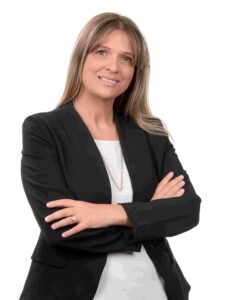By: Clarissa Rizzo, business unit manager for professional risks at Aon South Africa
In order to manage a Professional Indemnity portfolio, the risk itself needs to be attractive to insurers, who carry the ultimate risk. While clients across all professions are experiencing price increases, capacity remains sufficient in most markets, while insurers remain cautious in their approach towards complex and poor-performing risks.

Detailed information remains critical when renewing your PI policies and the need for focused and disciplined risk management remains key. Equally important is the need to timeously report claims or potential matters which could result in a claim. Following Covid, a new way of work has been adopted and while we navigate through this tricky terrain, the claims trends being identified by insurers show that we still have some way to go before we strike a balance.
Professional Indemnity Claim Trends
Some Insurers have highlighted five trends that are affecting professional indemnity claims at present. These include:
- Claims relating to design errors, be it calculation, specific materials, weather conditions or loadings, with a view that these trends are due to utilising identical designs scoped for other projects without having regard for distinguishing factors in the current project.
- Lack of skills transfer, lack of peer review and economic conditions that require quicker output with fewer resources, have also been identified.
- Fee recovery typically happens when the insured starts action for recovery of outstanding fees and their client responds with a counterclaim for negligence. In some instances, the counterclaim comes in as an avoidance tactic or a potential defence to the initial fee recovery. In other instances, there is real merit to these counterclaims and the fee recovery action by the insured seems to be a catalyst for the client to formulate their project grievances against the insured.
- Breaches of environmental legislation are another identified trend noted by insurers.
- Negligent acts of subcontractors or JV partners, where there is a lack of due diligence on the appointed parties or insufficient contractual instruments to ensure that the insured does not assume liabilities on behalf of their partners.
Given the adjustment and move from a soft market to a hard market over recent years, Q1 2023 remained stable in the professional indemnity arena, however, changes to insurers’ reinsurance treaties have prompted some limit and sub-limit changes to certain policies.

Navigating fraud challenges together
Connect, visualise and analyse data to identify and stop fraud with DataWalk: Our graph analytics platform using AI & ML to solve fraud challenges.
These challenges are not unique to South Africa. Limits and deductibles remain generally flat across most of EMEA, apart from Germany which experienced upward pressure on some risks. Increases in deductibles remained an important lever for clients to consider in an attempt to help offset the premium increases. While coverage has remained stable, increases can be expected as well as coverage restrictions being imposed on future renewals.
Insurers have specifically reported concern around consultants who are subcontracting with other entities. In many instances, the sub-consultants are relatively inexperienced and, in most cases, do not have the manpower to thoroughly check the work. For the same reason, they have limited insurance coverage in terms of retroactive dates and limits, which makes recovery in the event of a claim instituted against the consultant in respect of the subcontractor, extremely difficult for insurers to recover. At the same time, the consultants have not always been paying for this cover, since their policy would typically respond to defend the action in the hopes of recovering the amounts.
As a result, we can expect changes to be imposed by insurers to the underwriting methodology in the near future whereby fees paid to sub-consultants will quite possibly be included and no longer deducted from the fee income annual declarations to insurers. This too will create a potential increase in premiums.
Consulting engineers are typically involved in larger, more complex projects which require higher limits. With 385 reported claims between 2019 and 2023 emanating from 1500 professional indemnity policies placed with insurers through Aon. The amount claimed so far, taking into account that there are still a total of 103 open claims, is in excess of R446m. The current loss ratio is climbing rapidly and these identified trends cannot be ignored.
Insurers incentivising adherence to Quality Management Services (QMS)
While the professional indemnity market is experiencing challenges relating to capacity, price increases, deductible increases and stricter underwriting controls, insurers continue to incentivise firms to adhere to QMS. A 25% discount on the deductible payable on a claim is a common incentive if the Insured qualifies for this, but it is no longer a given that this discount is automatic.
Qualifying firms have definitely seen the benefit in these incentives over the years. Firms that successfully limited their liability, in line with the Insurers’ requirements, agreement qualified for a 50% discount in the deductible payable on a claim. Where the insured finds itself qualifying for both on a particular claim then a potential 75% reduction in the deductible payable becomes applicable.
PI claims are long tailed in nature and generally only mature after a 60-month period or longer. During this time, while determining liability or defending such, the deductible is usually only called upon when the matter is finalised. Going forward, however, insurers are contemplating and implementing a deductible to costs as well as to damages or settlement. This has not yet been officially implemented but we are starting to see this pulling through from various insurers on certain policies, which is, without a doubt, a bone of contention.
Some challenges faced by engineering and construction companies continue, with a few key areas highlighted below:
- Public-private partnerships
- Sustainability (environmental, safety and social issues)
- Risk management
- New contract models (such as ‘guarantee maximum price’)
- Resolving disputes
- Fraud/ethics
Looking ahead and beyond the confines of PI, Aon’s Global Risk Management Survey of 2022 placed cyber security as the number one risk facing all organisations, with an economic slowdown, scarcity of materials, regulative or legislative changes and failure to meet customer needs all within the top 10 current risks, and projected risks to continue well into 2024. The operating environment for engineering professionals is fraught with risk and the complexity that comes with many interrelated risks. The value of having a professional broker who understands every aspect of your professional and operational risks should never be taken for granted.

